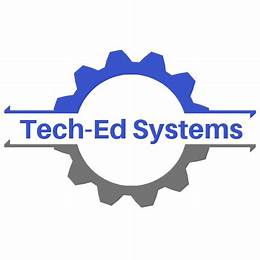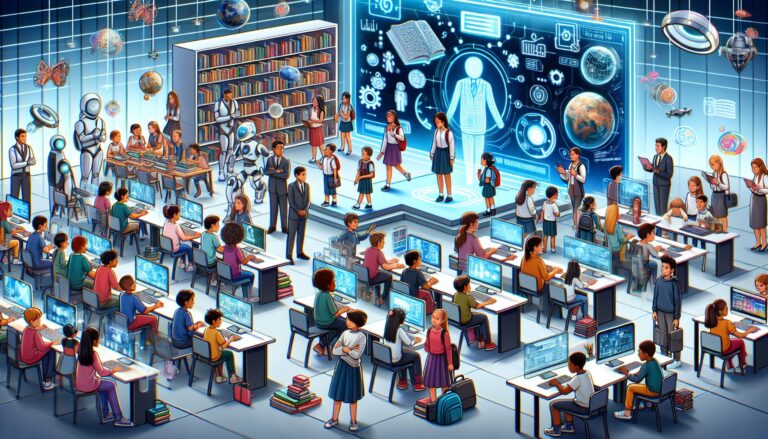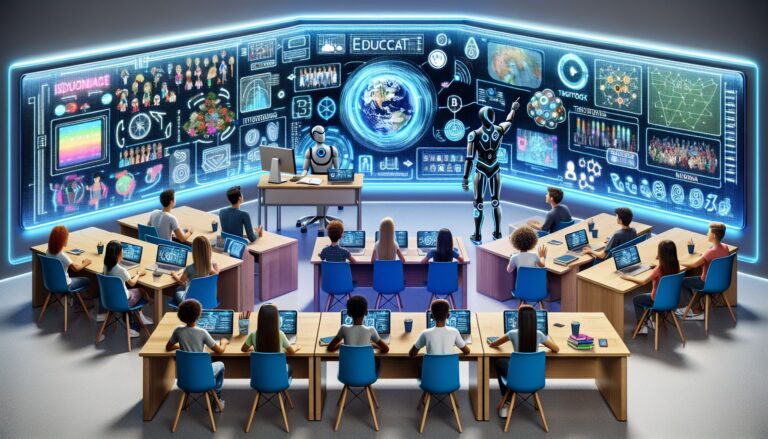Learning has leaped beyond the bounds of chalk and talk, reaching into a realm where digital boards and virtual classrooms reign supreme. The educational landscape is morphing, as innovative teaching methodologies interweave with burgeoning technologies, shaping the minds of a digital-native generation. In this crucible of change, educators and students alike are pioneers on a quest—a quest to redefine what it means to learn and impart wisdom in the 21st century.
As the narrative of classroom education is rewritten, it is essential to assess not only the shiny veneer of technology but the societal and ethical reverberations that come with it. The integration of digital tools into learning environments presents a bouquet of challenges and benefits, all the while reshaping the timeless dance of teacher-student interactions.
The Digital Classroom: A Double-Edged Sword
The allure of the digital classroom is undeniable. A world where information zips across screens, and interactive platforms turn passive listeners into active participants. The shift to online learning has been nothing short of revolutionary for many, breaking down geographic barriers, and enabling personalized learning experiences that adjust to each individual’s pace and style. From adaptive learning software to MOOCs, the tentacles of technology have extended into every nook of education.
Yet, with this digitization comes concern. Not all students have equal access to devices or high-speed internet, creating a divide that can exacerbate educational inequalities. Moreover, maintaining student engagement in this new virtual setting can be as elusive as capturing lightning in a bottle. The screen, once a portal to knowledge, can quickly become a distractible landscape of multitasking and divided attention.
In the ever-evolving pedagogic methods, the role of the teacher is also transforming. Gone are the days when the educator’s presence was solely confined to the head of the classroom. Now, they must be tech-savvy guides, capable of navigating both the curriculum and the complexities of digital platforms, fostering collaboration and critical thinking without the traditional in-person cues and reinforcements.
 Ethical Implications of Education Technologies
Ethical Implications of Education Technologies
The march of technology in education is not without its ethical dilemmas. As artificial intelligence (AI) begins to curate personalized learning experiences, questions surrounding data privacy and surveillance arise. How much should we allow algorithms to influence the educational journey of our youth? At what point does personalization become intrusion, and how do we navigate these murky waters?
Digital tools come with the promise of streamlining administrative tasks and providing valuable insights through data analytics. However, the reliance on machine-generated data and decisions opens up a new front in the battle for academic integrity and authentic learning outcomes. The need for discernment in technological adoption has never been so acute, as educators and policymakers strive to strike a balance between efficacy and ethical responsibility.
Gazing into the Educational Crystal Ball
As we stand at the junction of tradition and innovation, the future beckons with infinite potential. The rapid pace at which technology develops promises even more sophisticated tools for educators and learners. Virtual and augmented reality have already begun sprinkling elements of magic into dry subjects, creating immersive learning experiences that could once only be imagined. The potential for global classroom connections can foster an unprecedented level of international collaboration and understanding among the scholars of tomorrow.
Yet, as we embrace these advancements, there’s a vital need to remain anchored to the core tenets of education—human connection, empathy, and ethical consideration. Technology, no matter how advanced, should not overshadow the fundamental objectives of nurturing critical thinkers and well-rounded individuals.
The journey ahead is charted with both excitement and caution. By maintaining a vigilant stance on the ethical impasses and societal impacts, the amalgamation of technology and education can yield a path brimming with opportunities. As educators and learners, we must now proceed with a measured stride, for the digital footprint of today is the educational legacy of tomorrow.












